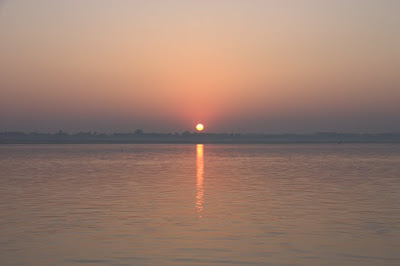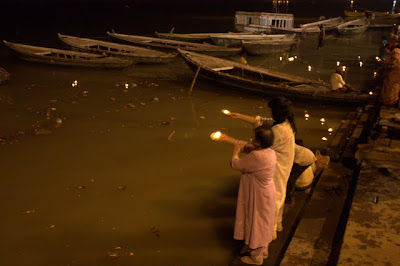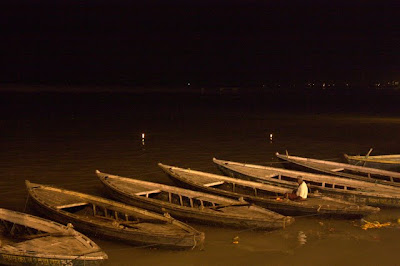Memo to Perverts Re: Your Weird Google Searches
To Whom It May Concern:
I’m sorry to disappoint the person who came to this blog after searching for “naked Japanese women in a hot spring,” or more disturbingly, “naked students onsen,” but as you’ve probably figured out by now, Google is not yet quite as fine tuned as you and it someday hope it might be. Take it from the many disappointed people who have come to Surrounded by the Sound after searching for some variation of a European country + “nude beach.” And to the person who day after day keeps searching for “Tom and Jerry porn” – ew, just ew.
Thank you for your attention to this matter.
Sincerely,
Amy
Welcome to God’s Country
We’d heard time and time again that southern India is much more laid back than northern India. As we landed in the southern Indian state of Kerala, we were hesitant. Having just left the blissful Andaman Islands, we weren’t really in the mood to dive back into the madness we had experienced in the north.
We can’t speak for all of southern India, but take it from us, Kerala is definitely not the north. On the way to our guesthouse from the airport, we were very confused. Why was the cars driving in their own lanes? Why weren’t they cutting off other cars? And most importantly, why is no one honking?
The state of Kerala is actually the world’s only democratically elected communist government and is one of India’s most progressive states. We hear that its not all rosy in Kerala – many breadwinners have to live abroad in the UAE and send money home to their families in order to make ends meet – but Kerala has made great strides in things like improving health care, raising literacy rates, and reducing litter. Keralans are proud of their state and have deemed it to be “God’s Own Country.”
A higher power certainly has bestowed beauty and lush tropical greenness upon Kerala. Our first introduction to Kerala was in the town of Fort Cochin, which is in the running with Kolkata to be my favorite city in India. (Not counting the fabulous Andaman Islands, of course). Like Kolkata, you can tell that the British once made their presence known in Fort Cochin. The Dutch and Portuguese also made their mark. Fort Cochin has a big Christian presence, and it was there that I saw an Indian nun for the first (and only) time.
Once we eliminated the small problem of ants trying to take up residence in our backpacks, we kept adding days onto our stay in Fort Cochin. We kept finding reasons to dawdle: an adorable little teahouse with Indian teas and a respectable death by chocolate cake; movie shoots to try to work our way into as extras; tropical flowers to photograph; fresh Keralean pineapple; waterside boardwalks with headbutting goats, Chinese fishing nets, ancient sprawling trees, and 1 rupee scales that tell you about your weight loss; Sean’s new Indian friends George and Justin at the old-school internet cafe; a cooking class to learn more about Keralean cuisine; an aryvuedic massage (which actually turned out to be NOT a good idea, but more on that later); dinner at a trendy, modern cafe cooked by local women; simultaneous pickup cricket and soccer games to watch; fantastic, delicious prawns from the seafood market, cooked with ginger and garlic; rickshaws decorated like Ferraris; real chicken briyani, finally; and tours by a guide named Magic Johnson. (And yes, I know there’s a lot of food on that list – we had some of our best meals in India in Fort Cochin).
Fort Cochin was enchanting, and we could have stayed longer, but the backwaters and beaches in God’s country were calling…
The one in which you will hate us if you are reading this from work or from a cold locale…
To say we were in India for 31 days almost feels like we were cheating, because 13 of those days were on the Andaman and Nicobar Islands. Set in the Bay of Bengal between India and Thailand, the islands are technically part of India, but their remoteness makes them something unique. The islands are actually geographically closer to Burma/Mynamar and Thailand than they are to India, but as of now, they can only be reached from India’s mainland. Because of their relative inaccessibility, development on the islands has been slow. Most of the tourists on the Andamans are upper-class Indians. Foreign tourists and most local tourists are not allowed to enter the Nicobar Islands, where ethnic tribes have been living their lives undisturbed for hundreds of years. Luckily for us, tourists are allowed , with a permit, onto the Andaman Islands. Other than a brief stint in Port Blair, the port of entry, we stayed at the Emerald Gecko on Havelock Island in a hut that was $15 a night. Beach No. 5, above, was a few feet from our doorstep. The Andamans are best seen, not described, so here’s some photos to either get you throwing darts at our pictures or, better yet, encouraging you to put New Year’s travel resolutions into action:
Port Blair:

To reach the islands, all visitors must fly onto the main island at Port Blair. Contrary to what Lonely Planet may try to tell you, Port Blair is a get in and get out type of place. It's not what you've came all this way to see, but you at least have to spend the night on your way out of the Andamans. We spent most of our time on Port Blair making use of the glacially slow internet, but we wandered around a bit. We came across these kids playing cricket in an empty lot, who paused their game to eagerly jump in front of the camera.

While the food on Havelock Island (and particularly at the Emerald Gecko) was some of the best we've had on our trip, the food in Port Blair leaves a lot to be desired. I ordered naan, an Indian bread, and it was served to me like this: wrapped in a dish towel that looked like it was used to clean up the kitchen for the post month. To add insult to injury, the waiter kept urging me to eat it, and even went as far as to unwrap it and touch the naan, saying, "why don't you eat the naan? It is hot, see? You must eat it when it is hot." I developed a sudden bread allergy...
Beach No. 5, Havelock Island

Upon our arrival on Havelock, we promptly took naps in these hammocks, listening to the waves. Sean thus achieved a goal he first had formulated when sitting in his cube. We could often be found here during our 10 days on the island. We nicknamed another couple the Hammock Hogs because they were often occupying the hammocks when we wanted to use them, but given the amount of time we spent there, I think the nickname was more appropriate for us.

The flip side to the lushness of paradise is that it must rain. We accidentally went to the Andamans during monsoon season, which meant we were subjected to two days of torrential downpours. The rains flooded the grounds of Emerald Gecko. This was the view from our hut during the rains.
The Infamous Beach No. 7

If you spend any amount of time on Havelock, you will soon hear about the lure of Beach No. 7, located way on the other side of the island. All of Havelock's beaches have white sand and waters that are different shades of blue and green, but none of the beaches have sand as soft as or waters that are as clear and easy to swim in as Beach No. 7.
Around the rest of Havelock Island

When we weren't napping in hammocks or lounging on beaches, you might find us scooting around the island on the scooter we rented for $4 a day.

Sean at Anju Coco, a shacklike restaurant we frequented when we weren't scarfing down the delicious food at Emerald Gecko. Despite eating banana pancakes for 10 days straight, I never got a photo.

One of our favorite days on the island was when we took the scooter past Beach No. 5 away from Village No. 1. There is a small, but developing tourist strip from Beach No. 3 to Beach No. 5, but beyond, there was not a tourist in sight. (Yes, everything is known by numbers, not names).

It is not hard to find fantastic deserted beaches around the island, especially if you head past Beach No. 5 away from the boat jetty in Village No. 1.
Savoring India’s Cocktails
We ended up in Kolkata by accident. With the trains booked up in the towns popular with tourists in the north due to locals traveling home for Diwali, we discovered flying to Kolkata was the fastest way towards our next destination, the Andaman Islands. And so we found ourselves spending Diwali in Kolkata.
It seems in the wake of every town formerly ruled by the British is a town with a confused identity. People say Calcutta, but when the name is written, the official name, Kolkata, is used. Just like when we were in Derry/Londonderry, I never really knew what to call it, because use of either term can be laden with political allegiances.
Setting aside any politics of colonialism, we discovered – and later confirmed in Fort Cochin – there’s some alluring about adding a splash of European to the India straight up we previously had been experiencing. It’s a mix that blends well – Kolkata felt exotic, but refined.
It is a testament to just how charming we found Kolkata to be that its charms were evident right away as we raced through its streets in a cab from the airport. We watched tall, leafy trees and stately buildings fly by in a blur. We whipped through one neighborhood, with alleyways draped in flowers, lights and shrines, so fast it was almost as if we dreamed it. We tried to locate the neighborhood on our own but could never figure out where it was.
In other cities, the only thing that assuaged my safety fears in traffic was that the roads were always too crowded to gain much speed. Not Kolkata. There, the wide, tree-lined boulevards – a leftover from the British – are raceways. Barreling down the street, our taxi driver didn’t slow down for pedestrians or stopped traffic. When traffic got in his way, he floored it into the oncoming lane. When pedestrians walked into the street, he didn’t slow down, but merely laid on the horn until they scurried away a second before impact.
We spent the next day becoming smitten with Kolkata. We loved Kolkata for any number of reasons. We loved strolling down Kolkata’s wide, broad boulevards and the stately, leafy trees that lined them. We loved the colonial architecture and the beautiful flowers decorating Kolkata’s classiest and biggest monument, the Victoria Memorial. We loved the tangy Bengali food and will always remember Kolkata as the place where we first tasted India’s sweet baby bananas. We loved the book stores with piles of English books and magazines, which allowed us to stock up on beach reads. We loved the shrines on the side of the roads, ranging from impromptu to elaborate. We loved the way we were mostly invisible as tourists, even though it meant cab and rickshaw drivers drove away if they couldn’t figure out where we wanted to go. We loved that you can find oasis in Kolkata and the city’s relative calmness after Delhi, Agra and Varanasi.
But mostly, I think we fell in love in Kolkata because of the city’s retro yellow British cabs. There’s thousands of them all over the city, zooming up and down Kolkata’s wide boulevards. All of the things above created a fantastic atmosphere, but the cabs really pulled it all together. I felt like we were transported back sixty years into a totally different India than the India we previously had been experiencing.
Our exhilarating arrival and our long day drinking in Kolkata’s atmosphere added up to a rather heady experience during our quick visit. The cheapest flights to the Andaman Islands, our next desintation, was either two days or ten days after we arrived. We would have loved to explore Kolkata further, but sometimes it is just best to savor just one cocktail at a time and not ruin a good thing by getting smashed, lest the honeymoon period be over and you wake up hung over. Maybe someday, we’ll try Kolkata’s cocktail again.

A tea wallah hands out chai in clay cups. When you're finished, you smash the cup on the street and return the clay to the earth.

Diwali celebrations mostly take place in the home, but we did see crackers go off and flowers and candles placed outside homes and businesses.
Holiness

Assi Ghat, shortly before dawn. This might be my favorite photograph of the whole year. The colors really did look like that.
Out of all of the holy places in a very holy country, Varanasi may well be the holiest. Varanasi lies on the Ganges River southeast of Delhi. The Ganges River is considered to be holy by the Hindu faith, so devout pilgrims make their way to Varanasi to immerse themselves in the waters. They bathe, dip, swim, pray, splash, launder, and wash in the river. Some even die there. Hindus believe that dying in Varanasi liberates the soul from the endless birth/death cycles they’d otherwise be subjected to if they died elsewhere. Cremations occur at the burning ghats on the side of the river, and bodies are carried down to the Ganges to their final resting place. The thing is, thanks to the mix of garbage, sludge, sewage, and creamated bodies that enter its waters, the Ganges is actually septic. Some uneducated people don’t know. Other people know and don’t care.
As you could imagine, Varanasi was a whole new level of intensity for us. To be surrounded by so much faith and so many private moments that are lived out loud in public was fascinating and overwhelming. The septic waters may not be scientifically capable of creating new life, and people may be dying all around, but Varanasi is one of the most alive places I’ve ever been.

Even though Varanasi is a holy place, above all else it is an actual city. This school bus rickshaw made us smile.

We typically took the auto-rickshaws and passed up the ones that are pulled by bicycle because it just seemed so uncomfortable to force another human to pull our weight around by his own.. This guy looked so crestfallen when we first refused the ride that we reconsidered and decided we should give him an opportunity to earn a living too. Although the slow ride made us miss the beginning of the night ceremony at the Dasaswamedh Ghat, riding on the cycle rickshaw gave us a totally different perspective than the noisy, exhaust spewing auto-rickshaws.

Varanasi is one of those places where you struggle over whether you should really be there, paying to observe real life, but in the end you participate like everyone else and try to make yourself feel better by saying, well at least I'm just observing, not intruding. We paid this man to row a boat down the Ganges at dawn like so many other tourists. The rowing is hard work and he was quick to let us know it, playing on our heartstrings with tales of his children in broken English to ensure a tip. Travel. It's complicated.

Sunrise on the Ganges. The light created is one of the most incredible things I've seen in my whole life. It makes the brown waters luminescent.

Everyone is doing their own thing in close proximity as if the others aren't there. Bathing, laundry, praying, sitting.







































